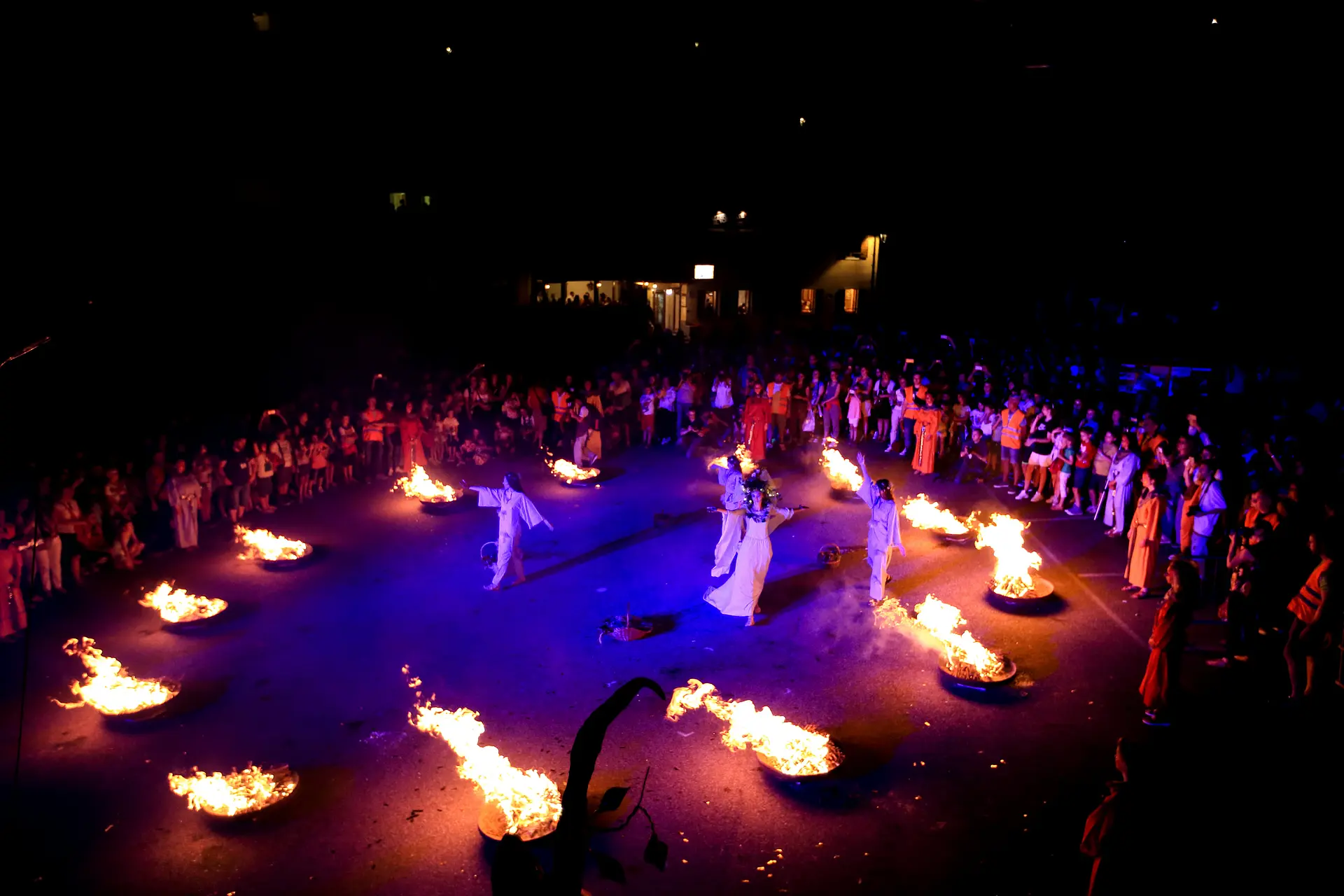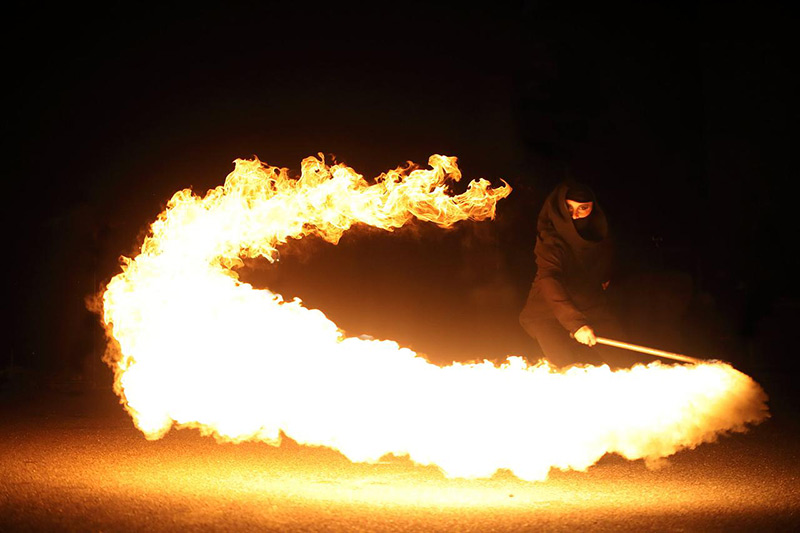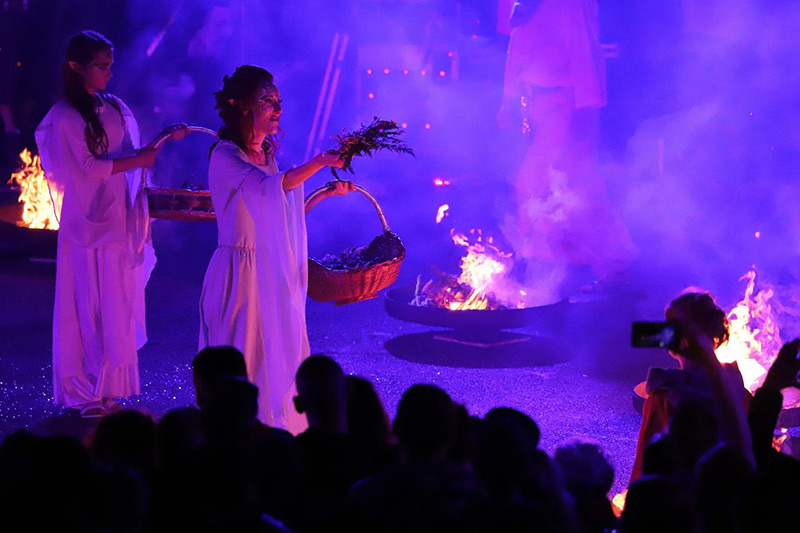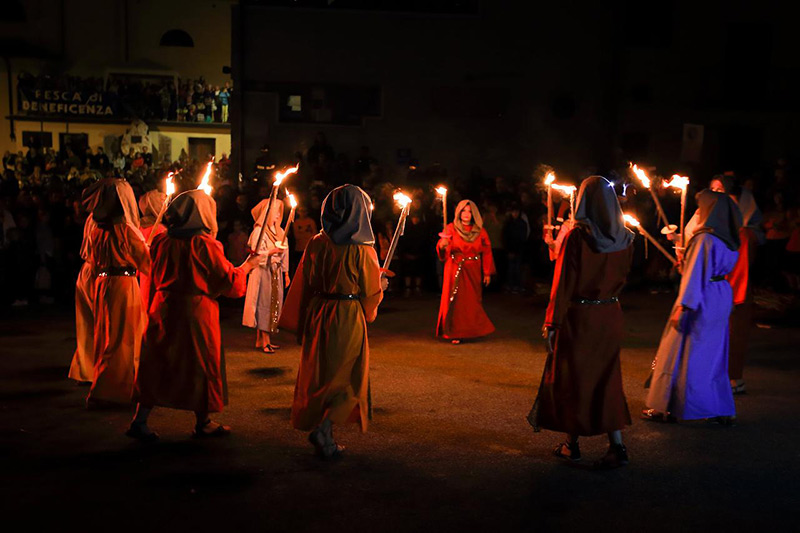SHARRYLAND


The Fire Festival in Giazza - Vaur Ljetzan
The shortest night of the year, the magic of the summer solstice and 13 braziers for one community



Where is

Giazza is a small mountain hamlet in the municipality of Selva di Progno, in the upper Illasi Valley in the Province of Verona, inhabited by less than a hundred people. A square, a church, houses clambering one on top of the other in search of sunshine, all graced by the stream with its roaring waterfall, and the edge of the forest from which roe deer and chamois often look out; higher up, it watches over the entire Carega Group: craggy, imposing peaks, real mountain. Every year, on June 23, the small community gathers in the town square to celebrate the Fire Festival, "Vaur Ljetzan" in Cimbrian. Through reenactments, music and fire shows, the ancestral rites of the Cimbri are renewed with the lighting of the 13 braziers, a symbol of their unity and of the ancient "13 Communes of Lessinia."
The shortest night, the most beautiful night
We are on the summer solstice, the shortest and most magical night of the year, when the sun is at the height of its light and reunites with the moon to begin its waning cycle. This day was considered sacred in Celtic and Nordic folk traditions and religions in which the power of fire and light, of waters and the earth fertile with herbs, crops and flowers were extolled. Throughout the countryside of northern Europe, the wait for the Sun was, and still is, propitiated by bonfires lit on hills and mountains, because fire has always been used to drive away darkness and with it evil spirits, witches and demons wandering in the sky. Witches in fact during this night would gather under large trees in the moonlight in search of magical herbs, but men, knowing their intentions, kept them away with high fires and, by making circles around the bonfires, closed to them any possibility of joining them. Around the fires people sang and danced, it was a magical night, a night of wonders: the waters found crystal clear voices and words, the flames drew promises of love and good fortune, while Evil dissolved defeated.
 Scenes from the show "Aurora" by the Company "Piccolo Nuovo Teatro" of Bastia Umbra (PG) - Fire Festival 2019
Scenes from the show "Aurora" by the Company "Piccolo Nuovo Teatro" of Bastia Umbra (PG) - Fire Festival 2019Today's Festa del Fuoco includes two moments of entertainment: a first part in which aerial dances, stilts, pyrotechnic effects and live fire enchant those present in a whirlwind of emotions; the second part, consisting of a representation of popular myths and legends of Lessinia. The village of Giazza itself is transformed into a stage setting, The show culminates with the arrival of the torch bearers of light and hope, followed by Aissa Maissa, the Queen of the Fades, who together with her young handmaidens, helps the Cimbrian woodcutters drive away the darkness by chasing away the ogre or menacing strie (witches), thus freeing them from their evil spells. The festival ends with the lighting of the 13 braziers, a symbol of the union of the ancient thirteen Cimbrian communities of Lessinia, around which the torchbearers and fades invite those present to join in dancing in a circle, so as to keep witches and evil away.
The story of the 13th commune
Giazza (Ljetzan) is the cradle of the Cimbri, a population of Bavarian-Tyrolean origin who settled in the area around the 12th-13th centuries, introducing an alternative culture and an economy based on coal and lime production: the last bastion where the inhabitants still keep alive the traditions and ancient Germanic speech, known locally as tauc. Following the arrival of the Cimbri, the bishop of Verona, Bartolomeo della Scala, granted the large group of settlers of German origin, on February 5, 1287, the vast uninhabited territory north of Roverè Veronese, more commonly known by the name "Lessini Mountains." The settlers were allowed to clear the land, create pastures for livestock and build farms. They were also free to administer themselves, to elect their own parish priests speaking their own language, to preserve their own traditions and to unite into larger communities.
 Aissa Maissa offers those present a bunch of "magical" herbs
Aissa Maissa offers those present a bunch of "magical" herbsThese communities, over time, grew in number and, towards the end of the 14th century, formed the 13 municipalities of the "Carbon High Mountain," as the Lessin plateau was then called: Vèlje (Velo Veronese), Roveràit (Roverè Veronese), Silvan (Camposilvano), Azari (Azzarino), Salain (San Mauro di Saline), Tavernole, Brunghe (Selva di Progno, of which Giazza was also a part), San Bartolomeo al Todesco or San Burtal (San Bortolomeo delle Montagne), 'Abato (Badia Calavena), Alferia el Sirè (Cerro Veronese), Pourantal (Valdiporro), Naughe Kirche (Bosco Chiesanuova), Kan Bisan (Erbezzo). The number thirteen for the Veronese municipalities of Lessinia was not always fixed, but dates back to a document of 1616.
 The arrival of the 13 torches
The arrival of the 13 torchesKnowing herbs to protect against evil
An ancient tradition says that on this magical night women were supposed to collect dew to make St. John's water to be infused with herbs to increase their beauty and their own fertility. One such herb is St. John's w ort , known as "St. John's wort," which, with its tiny yellow flowers, also protected wayfarers: those who were on the road on the night of the eve, when the witches were on their way in droves to the site of their annual convention, were protected from their spells by tucking St. John's wort under their shirts along with garlic, rue and mugwort. Then there is verbena, which, if picked at midnight on St. John's Eve, protected against lightning. Another important herb is heather, which, according to legend, was sown by fairies and goblins in the places they frequented: men who stepped on it would be lost in the darkness, while those who slept in its bushes could be kidnapped into the fairy world. Aissa Maissa, Queen of the Fades, and her handmaidens upon their arrival offer spectators of the Fire Festival a bunch of these freshly harvested herbs according to tradition, to be thrown into the braziers as a wish of good luck for those present.
Enter the Map of Italy's Undiscovered Wonders and find treasures where you least expect it... Inspire, Recommend, Share...
Collections
The Map thanks:
Enter the Map of Italy's Undiscovered Wonders and find treasures where you least expect it... Inspire, Recommend, Share...
Where is

Collections


